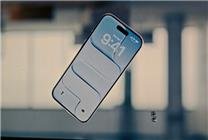Summary
- Apple’s Latest Innovation: The iPhone Air introduces a sleek 5.6mm design, drawing inspiration from the ultra-thin smartphones of the past.
- Pro Specifications with a Twist: Positioned between the standard and Pro models, the iPhone Air utilizes the A19 Pro chip, emphasizing design without sacrificing performance.
- Future Market Potential: The iPhone Air could redefine consumer expectations, paving the way for ultra-light devices in a market historically focused on larger, heavier smartphones.
Since the launch of the iPhone 12 series in 2020, Apple has consistently reinforced its flagship lineup with powerful models—standard, Pro, and Pro Max. However, the introduction of a fourth variant has led to fluctuating offerings like the mini and Plus. The recent unveiling of the iPhone 17 series marks a pivotal shift with the introduction of the ultra-thin iPhone Air, boasting a remarkable thickness of just 5.6 mm. This retro-inspired design brings forth questions about Apple’s motivations and the future of smartphone aesthetics.
Transitioning to the iPhone Air
The iPhone Air is not just another iteration; it aims to blend premium features with an innovative design ethos. Key specifications indicate that it is built on the same foundation as its Pro counterparts, utilizing the A19 Pro chip while sacrificing minimal performance. It’s crucial to understand that Apple does not view the iPhone Air as merely a replacement for the Plus models, but rather as an offering that balances flagship status with user-friendly design.
Design & Durability
Apple prioritizes design integrity in the iPhone Air. In stark contrast to the Pro models that have returned to aluminum, the iPhone Air utilizes a titanium metal midframe. This choice not only enhances durability but also provides a lightweight feel. The inclusion of super porcelain crystal panels on both the front and back increases resistance to scratches and drops, addressing key consumer concerns.
In terms of display, the iPhone Air features a 6.5-inch screen, supporting a 120Hz ProMotion refresh rate and an Always-On Display (AOD). This ensures optimized energy consumption, allowing the device to display notifications while minimizing battery drain—another vital consideration given its slim profile.
Camera & Connectivity Features
On the camera front, the iPhone Air includes a capable 48-megapixel fusion primary camera. However, it lacks additional options like ultra-wide-angle and telephoto lenses, which may disappoint avid photographers seeking versatility in imaging capabilities.
A notable feature is the exclusive support for eSIM connectivity, marking a first for domestic markets. Coupled with Apple’s own C1X modem, the iPhone Air offers improved cellular reliability. Additionally, the built-in N1 chip enhances connectivity with support for Wi-Fi 7 and Bluetooth 6.0, ensuring a seamless multi-device experience.
While consumers may anticipate trade-offs with a device this thin, Apple counters concerns with a redesigned MagSafe plug-in battery that is significantly lighter than its predecessors.
Compromises of Ultra-Thin Design
Positioned strategically between the base models and Pro versions, the iPhone Air exemplifies Apple’s commitment to high-quality materials, though compromises are evident. Users must be cautious, as the physical limitations imposed by a thinner design result in potential battery life and thermal performance trade-offs.
The debate surrounding screen size is particularly relevant in the context of user preferences. The iPhone mini series has previously demonstrated that a small screen does not equal user satisfaction. The iPhone Air, unlike its mini predecessors, maintains a larger display while optimizing for a lighter form factor. It serves as a "second main machine," reflecting a shift in consumer demand towards versatility without sacrificing weight.
Market Implications for Lightweight Devices
The launch of iPhone Air signifies a resurgence in the ultra-light segment of smartphones, an area largely ignored by domestic manufacturers historically focused on larger devices. Over recent years, the industry has fixated on larger dimensions, leading to heavier smartphones. However, with the iPhone Air, the narrative is changing.
Compared to more substantial models, devices like the Samsung Galaxy S25 Edge have illuminated the market’s appetite for lightness rather than size. The emphasis on portability is gaining traction as consumers increasingly prioritize usability in daily tasks.
Apple’s approach may not be flawless. The limitations imposed by a smaller battery and minimal camera options are notable. This model is clearly designed with a niche audience in mind: those who value lightweight devices over a comprehensive photographic experience.
Conclusion: The Future of Ultra-Light Smartphones
The iPhone Air arrives as a blueprint for the future of smartphones that caters to an essential consumer craving—combining functionality with a lightweight feel. Its launch may urge domestic manufacturers to rethink their strategies. Innovative materials and technology could lead to even lighter flagship devices that retain robust performance and sophisticated imaging capabilities.
As the market evolves, the concept of ultra-light devices is expected to flourish. Consumers looking for alternatives to heavier smartphones might find such offerings increasingly appealing—particularly if they are equipped with higher battery capacities and enhanced camera functionality. The iPhone Air could thus be a catalyst for change, offering a glimpse into the potential for future smartphone designs that harmonize lightness with performance.







